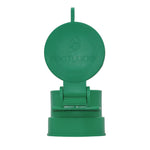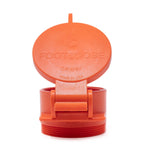You have no items in your shopping cart.
Compared to human travel buddies, however, traveling with your fur babies comes with a unique set of challenges. Whether you are taking a breezy day trip to the beach or a multi-day voyage across the country, RV camping with pets requires some forethought.
Are you planning on hitting the open road with your dog, cat, guinea pig, or cockatoo? You’re in good company: An estimated 65 percent of RV owners report bringing their pets with them on road trips.

And with planning and a bit of resourcefulness, your fur baby can tag along on your RV trip safely, comfortably, and happily. Before hitting the road, check out these tips for traveling with pets from experienced RVers with pets.
Before you leave
A successful RV trip with your four-legged child begins long before you take the wheel. In the days leading up to your trip, make sure you take these steps to pet-proof your RV vacation:
Map out a pet-friendly route.
When you’re RV tripping with your animal, plan on pulling over for plenty of potty and exercise breaks. Make sure the route you are driving has plenty of stops where you can safely take a pet pit stop. Many large rest stops will have a designated area for dogs to do their business and stretch their legs.
Go on a practice trip.
Before embarking on a long RV vacation, take your pet for a quick practice trip to see how they handle the RV. Some pets will love the open road as much as you do, while others might be frightened of the vibration of a vehicle in motion or the noise of the engine.
During your practice trip, take notice of whether your pet shows signs of anxiety by whining, pacing, or drooling. To calm an anxious pet, try bringing along some pet toys and talking to them in soothing tones. Once your pet calms down, give them praise and feed them a treat before returning home. For particularly anxious pets, you may want to repeat your practice trip a few times, gradually increasing the distance each time.
Visit the vet.
Schedule a visit to the vet well in advance of your trip—ideally a week or two. That way, you’ll give yourself plenty of time to update any vaccinations, stock up on any medications, and take any health precautions to keep your pet safe and healthy in new environments and around other pets.
Microchip your pet.
If you haven’t already, we highly recommend having your dog or cat microchipped so you can easily reunite if you become separated. A far-off location is the worst place for your small friend to go missing, and implanting a chip will make them findable wherever they’ve scampered off to.
Pack the appropriate pet records.
Many campgrounds and destinations require proof of immunization and other documents for pet guests. Here is a complete checklist of documentation to take when bringing your pet on an RV trip:
- Proof of ownership
- Medical records with proof of vaccination
- Microchip details
- Pet insurance documents
- Photographs of your pet in case they get lost
Pack pet essentials.
To keep your pet soothed and happy in a new, unfamiliar environment, outfit your RV with all the comforts of home. Here’s a checklist of pet essentials to pack:
- Your pet’s bed
- Toys
- Food and water bowls
- A no-spill water bowl for your pet to drink from while the RV is moving
- Pet food
- Treats
- Water
- Crate, kennel, carrier, or other enclosure
- Leash
- Collar with I.D. tags
- Bags for cleaning up waste
- Medications with copies of prescriptions
- Pet booties
- Pet tick and mosquito repellent
- A pet life jacket
- Old towels to dry them off with
Take a long walk.
Right before leaving, make sure your pet is good and worn out by taking a long walk. That way, they can take care of business and start the trip tired but happy.
Skip a meal.
Pets tend to get anxious and motion sick on long car rides, which can cause an upset stomach, diarrhea, and vomiting. To prevent tummy problems, skip a meal right before leaving on the day of your departure.
On the road

Once you’re adequately prepared and packed, it’s time for you and your pet to kick off your RV journey. Here are some tips to keep in mind when your pet is along for the ride:
Keep your pet secure.
For your pet’s safety, you shouldn’t let them roam your RV while it’s in motion. Instead, keep your furry pal in a secure crate or carrier anchored to the vehicle with a seatbelt or strap. If you have a dog, consider purchasing a dog harness to keep them from bouncing around the RV or being injured in a crash.
Don’t let your pet ride shotgun.
However you fasten your pet up, make sure you keep them in a back seat rather than riding shotgun, where an airbag could deploy and injure them. And no matter how much your dog loves to feel their ears flapping in the breeze, you should keep your furry pal from sticking their head out the window—it can cause ear damage and lung infections.
Take plenty of pit stops.
Every few hours, make stops at rest areas along the journey to let your pet use the bathroom and get a little exercise. Whenever you leave the RV, make sure your pet has a leash, collar, and ID tag.
When you arrive
Once you reach your destination—be it a remote desert, shady lakeside campground, or your aunt Mimsy’s driveway—follow these tips to ensure your stay is enjoyable and worry-free for you and your pet:
Keep your dog on a leash.
When exploring your destination with your dog, make sure to leash up. Not only do campgrounds and local municipalities often require a leash, but it will also prevent your pet from getting lost and keep them out of the way of neighbors, wildlife, or vehicles.
Clean up pet waste.
Cleaning up after your pet is another common requirement in campgrounds and cities. Even in the wilderness, it’s important not to leave behind any pet waste. Animal waste can cause environmental problems for water, wildlife, and humans.
Make sure they’re comfy and safe when unattended.
If you leave your pet behind in the RV, be sure to leave air vents open and the fan on. In hot climates, keep the air conditioner running; in cold climates, crank up the heat. It’s a good idea to have a backup system installed in your RV in case of a power outage while you’re away from the RV.

Stick to consistent activities.
When it comes to walks and feeding time, try to be consistent with the schedule you follow back at home. Sticking to a routine can help your pet settle as they adjust to your new destination. A schedule is key to preventing potty training accidents and teaches your pet that your RV is a safe second home where they have access to food, water, and their beloved human friend and travel bud.
Check out: RV trip ideas to help you glamp in style.









